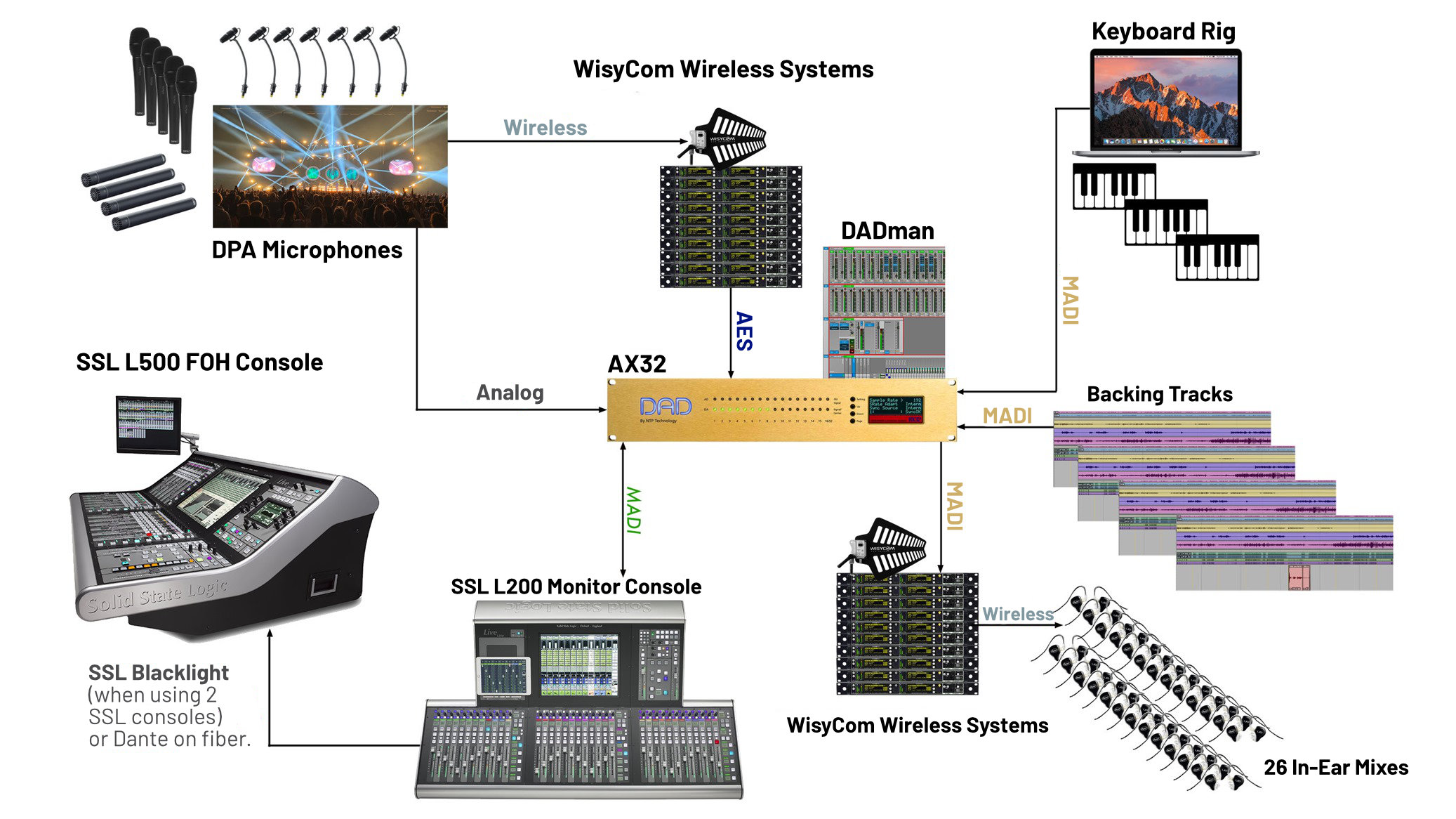In live sound latency is a major factor. There are many points in a very complex plethora of various signal chains that ultimately have to not only co-exist but also complement each other.
There is no such thing as zero latency, but we’re exploiting ‘near-zero latency’ to the extreme. Our Thunder | Core audio interfaces provide 2 samples latency on the connection and a total of 9 samples in the digital interface, including EQ and summing.
Our solutions are equally fit for FOH as well as monitor mix and playback station tasks.

Back in the day, the technical live sound ‘station’ was more or less Front of House, but soon the demand for a dedicated monitor mix instance arose. Over the years, however, live concerts have evolved from ‘just’ being a matter of capturing, amplifying and distributing sound from the stage and to an audience.
Today, a concert is a show – an immersive event – that is till about the music atthe core, but also a visual event. And the musical side of things is far more complex than when Led Zeppelin and Deep Purple entered the stages in the 60’s.
Now, most artists have a huge bands where each member requires a unique in-ear monitor mix, and there are tons of tracks that need to be synced tightly, as well as one-shot samples that are typically triggered by a drummer.
This has caused a new ‘station’ to emerge in the live sound field – Playback. Or as some like to call it: The Hot Seat! Because pretty much everything runs through this station and the playback engineer is easily one of the most important persons behind the stage.
As an exemple, you can see in the below diagram, how Lukas Graham toured with 26 wireless in-ear monitor mix channels, as well as tracks, keyboard rigs running off computers on top of the ‘traditional’ band setup with instruments and mics. And this setup is from a previous tour without a dedicated playback station.

AS CLOSE TO ‘ZERO LATENCY’ AS YOU CAN GET
Our Thunder|Core Technology provides a Thunderbolt 3 connection with near-zero latency for interfacing between audio applications on macOS or Windows computers and the Thunder|Core audio hardware. The interface provides a fast Thunderbolt 3/PCIe connection and data transfer with 2 samples latency on the connection and a total of 9 samples in the digital interface, as total also includes EQ and summing processing within the unit.
The channel capacity is up to 256 audio channels at 48 and 96 kHz, and the latency at 96kHz is 95 microseconds. The total round-trip latency with an audio software application will depend on the buffer size set for the application. With a buffer size of 32 samples, the latency is 670 microseconds at 96 kHz.
From Fast to Ultra-Fast
If you run DAD units at both FoH, Monitor and Playback stations, you can even use DADlink to go to a hyper-speed scenario. DADlink is a new proprietary audio and data format that establishes a super-fast highway between DADlink-compatible units such as AX64, AX Center, Core 256, AX32, and more. Depending on the samplerate, you can transfer up to 128 bidirectional channels between units at zero latency.
Samplerates from 44.1kHz to 384kHz are supported, and the dynamic range is a staggering 237 dB, ensuring a fast and reliable transfer at the highest audio quality imaginable.
Of course, there will always be some measure of latency, but it has been widely accepted that e.g. 42 microseconds – or 2 samples – latency on the MADI format is referred to as ‘near zero latency’. Therefore, we are now going all in ans just saying ‘zero latency’, as DADlink provides <100 nanoseconds of latency. This translates to 0.005 sample at 48kHz – or 400 times faster than on a MADI connection. Further, the DADlink format ensures transparency for audio time stamps across DADlink-connected units.
So, in conclusion, in an environment such as live sound where latency is of paramount importance to everyone involved, a DAD setup with DADlink between each instance is the ideal setup for audio routing and conversion between audio formats.
